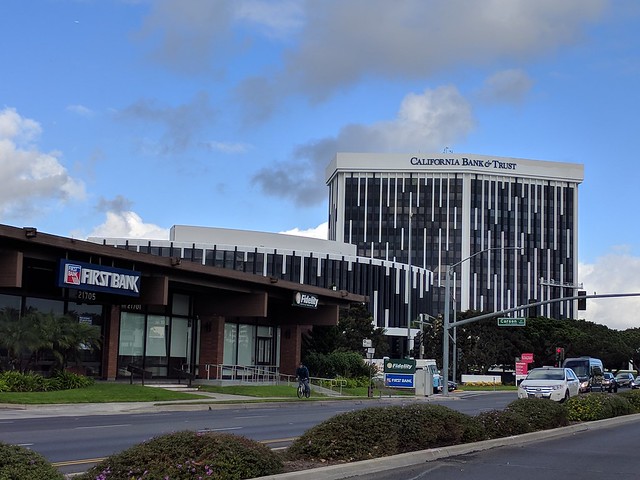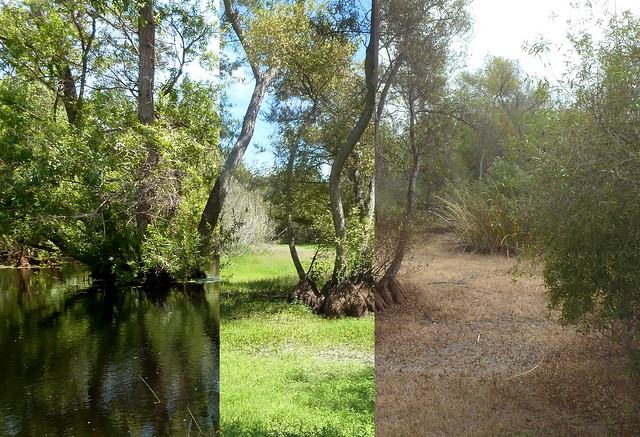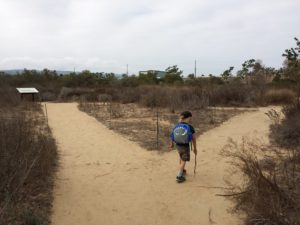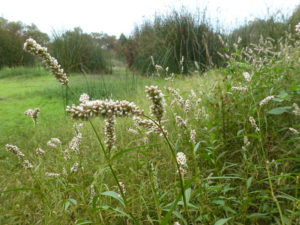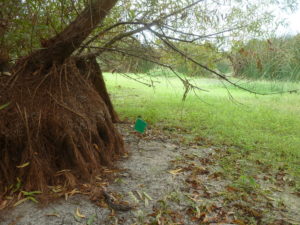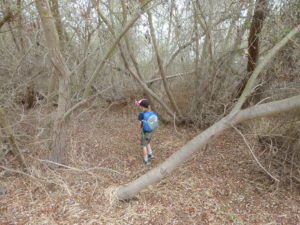At the end of August I returned to the Madrona Marsh Preserve. It’s a fragment of the seasonal wetlands that used to dot the western edge of the Los Angeles basin, just inland from the coastal hills. These low-lying areas collect water during winter and spring rains, then slowly dry out over the summer, only to fill up and become wetlands again the next year.
On a hike in May I found extensive pools and lots of wading birds. Trees kept some parts shady. Scrub prevailed on the higher ground.
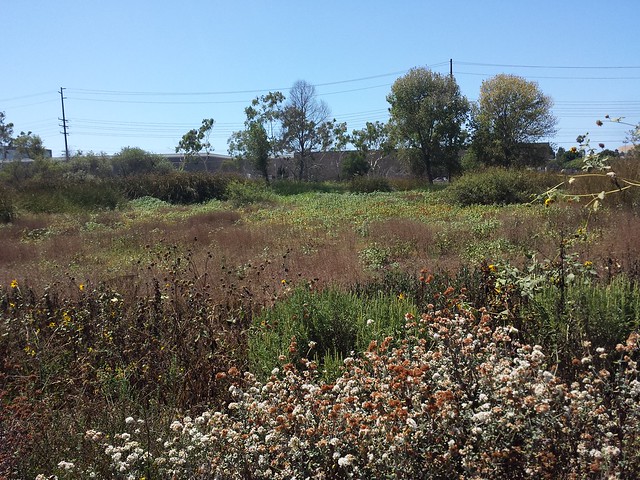
Returning at the end of summer, I found the area near the entrance looked about the same as it had before. As I got closer to the low-lying areas, the scrub seemed to have grown thicker. The pools were gone, but the ground where they’d been was clearly still wetter than the area around it. Plants were greener, and in some places it was still muddy.
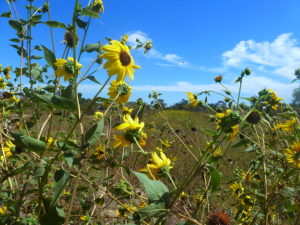 There were also fields and fields of wild sunflowers. Most of the places that had been mud flats in spring were now covered with sunflowers. Some areas I’d walked to get closer to the pools were completely blocked. I saw dragonflies, and in a few places I found bushes that were absolutely covered with clumps of foam from some sort of bug.
There were also fields and fields of wild sunflowers. Most of the places that had been mud flats in spring were now covered with sunflowers. Some areas I’d walked to get closer to the pools were completely blocked. I saw dragonflies, and in a few places I found bushes that were absolutely covered with clumps of foam from some sort of bug.
Once I reached the tree-covered area, I walked a trail that had been underwater the last time. It seemed to end abruptly until I realized that a tree limb had snapped and fallen to block the trail. It was still attached about ten feet up.
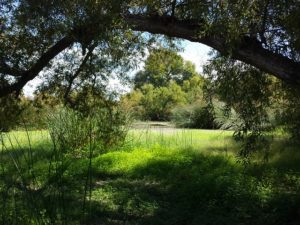 In the lowest, shadiest part of the preserve, I did find pools that were still wet, and still host to a few wading birds. I wonder if I return in, say, November, will they have dried out as well, or is there a last bastion that stays flooded all year (at least in years with normal rainfall)?
In the lowest, shadiest part of the preserve, I did find pools that were still wet, and still host to a few wading birds. I wonder if I return in, say, November, will they have dried out as well, or is there a last bastion that stays flooded all year (at least in years with normal rainfall)?
I didn’t recognize the spot at first, or I would have tried to frame it the same way, but I did manage to get shots of the same clump of trees flooded in spring and surrounded by dry land and low plants in summer. It was interesting to see the spreading roots without the water.


You can view the full Spring hike (23 photos) and the full Summer hike (8 photos) on Flickr.
